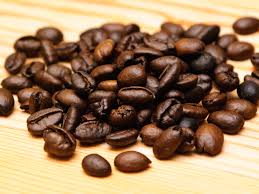
Breaking News
John Sneisen - Outernet and Canadian Economy
 "You Will be Programmed and Enslaved Through AI" - Iain Davis
"You Will be Programmed and Enslaved Through AI" - Iain Davis
 $80 SILVER IN CHINA RIGHT NOW - The Premium Explosion Means Squeeze Incoming
$80 SILVER IN CHINA RIGHT NOW - The Premium Explosion Means Squeeze Incoming
 Do you want to really know what the banks are doing about their silver situation?
Do you want to really know what the banks are doing about their silver situation?
Top Tech News
 EngineAI T800: Born to Disrupt! #EngineAI #robotics #newtechnology #newproduct
EngineAI T800: Born to Disrupt! #EngineAI #robotics #newtechnology #newproduct
 This Silicon Anode Breakthrough Could Mark A Turning Point For EV Batteries [Update]
This Silicon Anode Breakthrough Could Mark A Turning Point For EV Batteries [Update]
 Travel gadget promises to dry and iron your clothes – totally hands-free
Travel gadget promises to dry and iron your clothes – totally hands-free
 Perfect Aircrete, Kitchen Ingredients.
Perfect Aircrete, Kitchen Ingredients.
 Futuristic pixel-raising display lets you feel what's onscreen
Futuristic pixel-raising display lets you feel what's onscreen
 Cutting-Edge Facility Generates Pure Water and Hydrogen Fuel from Seawater for Mere Pennies
Cutting-Edge Facility Generates Pure Water and Hydrogen Fuel from Seawater for Mere Pennies
 This tiny dev board is packed with features for ambitious makers
This tiny dev board is packed with features for ambitious makers
 Scientists Discover Gel to Regrow Tooth Enamel
Scientists Discover Gel to Regrow Tooth Enamel
 Vitamin C and Dandelion Root Killing Cancer Cells -- as Former CDC Director Calls for COVID-19...
Vitamin C and Dandelion Root Killing Cancer Cells -- as Former CDC Director Calls for COVID-19...
 Galactic Brain: US firm plans space-based data centers, power grid to challenge China
Galactic Brain: US firm plans space-based data centers, power grid to challenge China
How to Roast Coffee Beans at Home

Note from Daisy: When I saw this incredibly useful post over in the forum, I knew I had to share with you guys for two reasons: first, to show you how awesome our forum is and secondly, to provide this fantastic information.
For those of you who will go postal without would really miss a cup of coffee after an SHTF event, the best way to stock up it is with green, unroasted coffee beans. (You can get green coffee beans packed for the longterm in cans with a 20-year shelf life here.)
But the thing to know about green coffee beans is that you cannot brew coffee with them until you roast them. Here's an awesome primer, posted with permission, on how to roast coffee beans at home to get you started.
How to Roast Coffee Beans at Home
There are numerous advantages to home roasting. You make the coffee that you want, the cost is much less, green beans last for a long time, (some say for years if properly stored) whereas roasted beans start deteriorating in flavor within a week or so regardless of how it is stored. Home-roasted coffee makes good gifts, too.
If you start looking around you will find many opinions on how to roast your own coffee beans. This is how I do it.
The Beans
I get my beans from Sweet Maria's. They have many varieties and a plethora of information on roasting. Beans are available from South America, Central America, Africa, Indonesia, South-East Asia, and a few other regions. I have tried many.
My palette is not refined enough to be able to differentiate the subtleties in the cupping descriptions. Most descriptions read like pedantic wine snob's oenological lexicon. Here is a description of a Burundi Kayanza Nemba Station – Wet Process Bean with a cupping score of 87.9 – it costs $4.77 if you purchase at least 20 pounds. (gotta add shipping) "Tea-like characteristics flourish in the brew, Oolong and black teas, along with baking spice and a juicy lemon note. Acidity is brilliant, like citrus and the tannic side of black tea, and Nemba's finish is quite clean." City to Full City.
Even though I prefer a light City to Full City roast, I do have a few varieties that list as being good for espresso. There is a 95-year young lady at my church who loves dark roast. I usually keep her supplied.
Sweet Maria's would be my recommendation for your first stop in roasting. You may want to start with one of their sample bags. I also purchased a book on home roasting from them. ( I probably should get a kickback for recommending them since I have sent many to their site. I don't get a kickback, but I should.)
The Equipment You Need for Roasting Coffee Beans
My first few pounds were roasted in a toaster oven. I currently use a Victorio popcorn popper that I purchased from….Sweet Maria's. (You can find that popper here, too.) It is designed with coffee roasters in mind. Skip the cheaper $25 aluminum popcorn poppers. The gears are plastic and it is aluminum.



